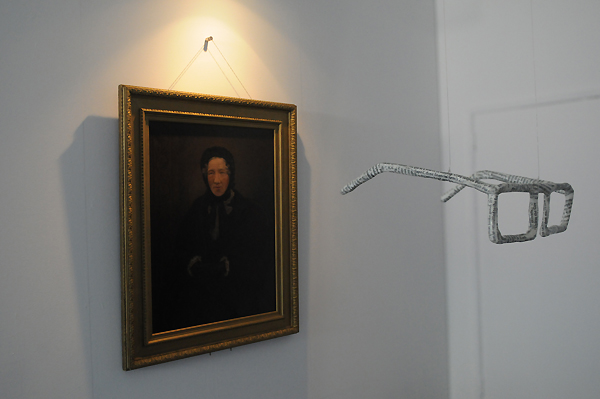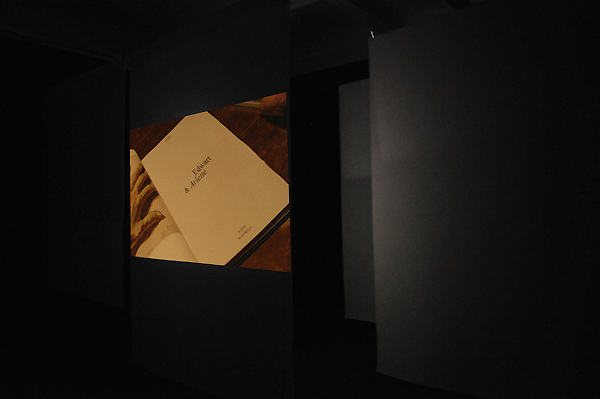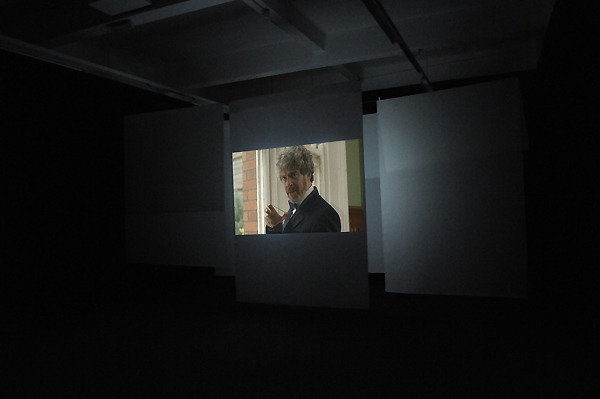But what end? 2014
8 May – 14 June 2014
Golden Thread Gallery, Belfast
“What is the meaning of it, Watson?” said Holmes solemnly as he laid down the paper. “What object is served by this circle of misery and violence and fear? It must tend to some end, or else our universe is ruled by chance, which is unthinkable. But what end? There is the great standing perennial problem to which human reason is as far from an answer as ever.”
The final paragraph from The Adventure of the Cardboard Box
a short story by Arthur Conan Doyle, published in 1892
This quote opens Alan Phelan’s exhibition of new, recent and re-configured work, centred around an adaptation of this Sherlock Holmes story in a new film titled “Edwart & Arlette”. With characters, dialogue and settings all reworked, this stylish whodunit hands over the detective work to the audience, since Sherlock himself has been removed from the narrative. With the central characters modelled on a photograph of a French art critic and museum curator, the film shifts into a different range of references, stemming from a collection of hand photographs which the artist used to determine the shot design and dialogue. The words and sentence fragments found on the images were developed into dialogue and remain in the order they were found, forcing the narrative to take some unexpected turns.
Re-configuring works, his own and other artists, has become an important element in Phelan’s practice. Works are not just re-contextualised, but re-named, spun, and connected to different ideas. All together the show explores through various objects and installations “a circle of misery, violence and fear” as with Sherlock’s plea above but thankfully negotiated through humour and inventiveness.
Other reference points and works include the Michael Haneke TV film 1984 “Wer war Edgar Allan?”; Serbian karaoke mashed-up which the 1980s pop band The Sparks; former Taoiseach Brian Cowen; graphics from Jim Larkin’s “Irish Worker” newspaper; as well as a selection of works which are remakes of others artists’ multiples. Together they do indeed explore the object served by a circle of misery, violence and fear but thankfully negotiated through humour and inventiveness.
The topography of “But what end?” takes an initial cardboard route, re-presenting recent works using screens and boxes or card. Re-configuring works, his own and other artists, has become an important element in Phelan’s practice, where works are not just re-contextualised but re-named, spun and connected to different ideas. The 1998 installation “Self-Rescue Mechanism #1” is now presented as a stack of boxes with headphones which play the voiceover by RTE radio presenter Joe Duffy as he reads the chat room script of two artists discussing how to approach auto-erotic asphyxiation from a sentimental perspective.
Just as Conan Doyle was inspired by Giovanni Moreilli in his construction of the Holmes character, so too is Phelan, in demanding that we look at the small detail for clues. The Moreilli technique was a mid nineteenth century identification technique for paintings – by following the unconscious traces left behind by the artist, in this instance the rendering of ears or hands, which tend to have a unique identity, a lot like fingerprints at a crime scene. But as grand narratives and notions of authorship have been shattered and moreover diffused, the shifting parameters of meaning are now mandated to embrace chance and intuition in connecting to a real world of possibilities where meaning is not so pre-determined.
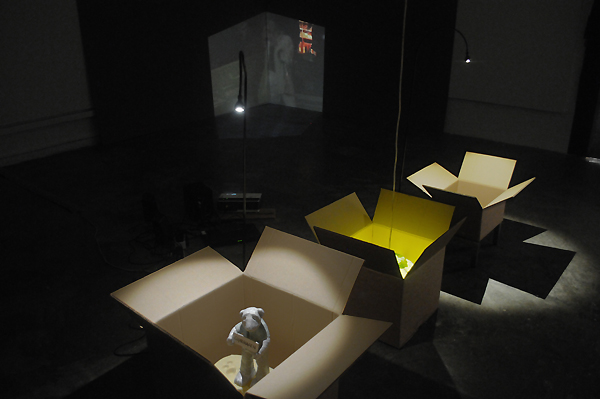
video projection, hanging cloth and sculptures in cardboard boxes:
Sweet, 2011
video projection, 4:48 minutes duration
A Skull Perhaps, 2011
Leftover papier-mâché, glue
Cabbage Shade, 2011
light fixture, rubber leaves, wire
Protest Polar Bear, 2010
archival paper, EVA glue, toner, varnish, plastic cheese, motor, acrylic, wood, paint (papier-mâché made from an article from the Irish Times about the street paper collectors called Cartoneros in Buenos Aires, April 2010)
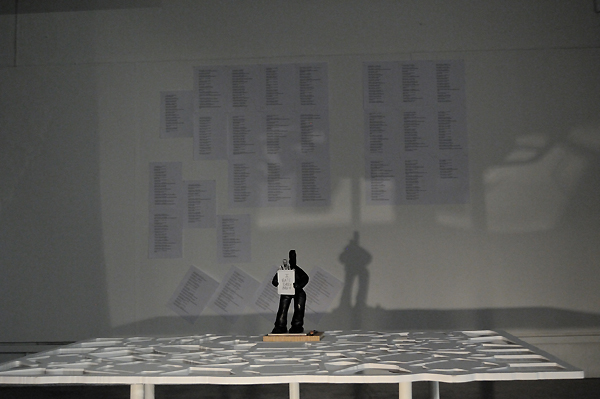
toner on paper
50.2.1, 2013
remade multiples by: Linsay Seers, Gerard Byrne, Kathy Prendergast, Pádraig Timoney, Alun Rowlands
bear with ear head cast in modelling wax; acrylic, paper, ink, glue; shoe brush, polish; ceramic tile, paint, lacquer, paper; notebook with woven cover
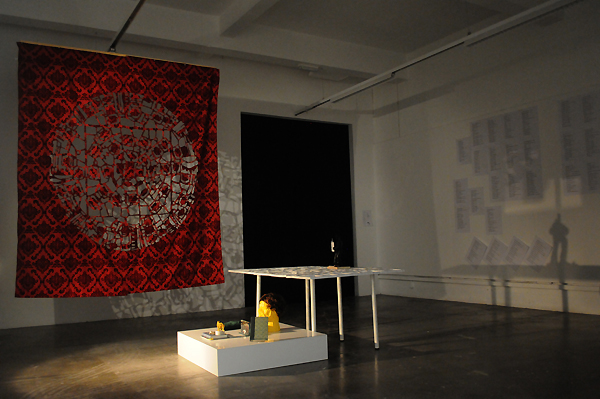
cut velvet curtain fabric, printed cotton, adhesive, wood
Handjob elements, 2013
Selection of works from the Handjob show in Oonagh Young Gallery: Brenda Moore McCann Medical Semiotics, 2013 bespoke hardback, ink; les mains dans l’art, 2013, inkjet prints, glass; stump warmer, 2013, faux fur
12. 50.3.2, 2013
remade multiples by: Dermot O'Brien Mike Minnus Walker & Walker David Shrigley Matthew Higgs
wind-up toy dinosaur, varnish, flock; paper, toner; plastic nose, steel wool; notebook, paint; custom printed mouse mat

remade multiples by: Eoghan McTigue, Ciaran O'Cearnaigh, Alice Maher, Elizabeth Wright, Mac Dermot & Mac Gough, Gary Coyle, Shane Cullen
display case roof, trestle legs, light bulbs; Latin American hardwood wood, blue transfer ink; black heavy duty latex glove and artifical hair; Readers Digest Universal Dictionary, ham sandwich; shirt collar, wire; jar, lid, Liffey water, stamped addressed envelope; apples



